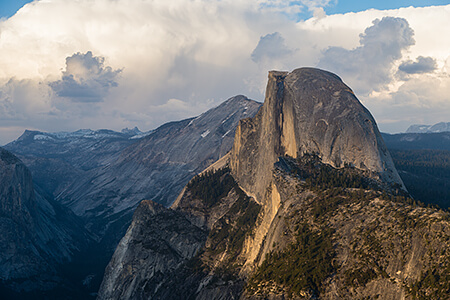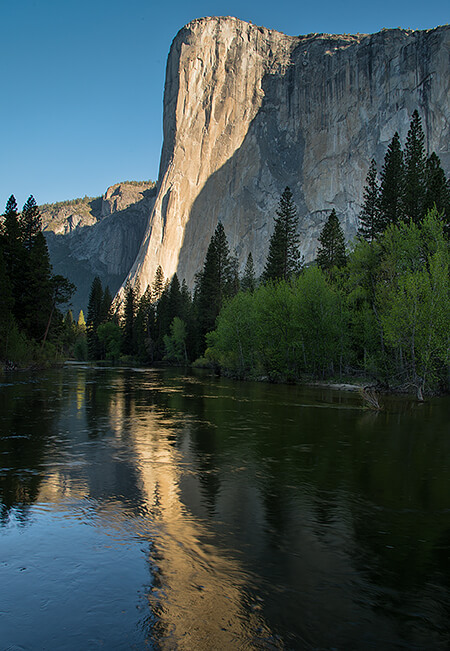One question I hear a lot on workshops is when and why use graduated ND filters in the field. Can’t you do the same thing in the computer? The answer is yes and no. If you have a scene with a bright top part and lower dark area, then you could expose for the highlights in the field, and use the gradient tool in CS6 or LR4 to tone down the bright area. This in turn would allow you to brighten the darker lower half. All a gradient is doing is reducing contrast in an exposure that will look better to us in the end. Since our eye can see way more dynamic range (shadow detail to highlight detail) in a scene, reducing this contrast with the gradient tool or grad ND filter better represents what we see.
But using a grad ND filter has advantages that might not be obvious. First, you can capture more data in the field using a ND filter. Imagine a scene with lots of dynamic range. If you expose for the highlight part of the shot, you might actually lose shadow detail that goes off the left edge of your histogram. Ocean sunsets are a good example. The setting sun over bright water can be many stops brighter than the dark reef rocks on the beach. If I use a grad ND filter to tone down the highlights, then I can actually increase the overall exposure. Since I’m not worried about the extreme highlights anymore, I can capture more data on the bright, right side of the histogram, the area in digital capture that contains the most information.
Another question is why not just use HDR? True, you can use this on many images with great success. But what about moving scenes like streams or crashing surf? Sandwiching moving elements doesn’t work well in HDR. Use a grad ND filter and you don’t have to worry about multiple exposures and moving subjects.
 I use Singh-Ray graduated ND filters, the larger 4×6″ size so I can hand hold them over my lens. Handheld filters eliminate the bracket and possible vignetting you get when using a super wide angle like a 18-35mm. My two favorites are the 2 stop soft edge and the 3 stop hard edge filter. The soft edge works great in mountain areas with uneven horizons. The hard edge filter works great with clean horizons like oceans, fields and big lakes.
I use Singh-Ray graduated ND filters, the larger 4×6″ size so I can hand hold them over my lens. Handheld filters eliminate the bracket and possible vignetting you get when using a super wide angle like a 18-35mm. My two favorites are the 2 stop soft edge and the 3 stop hard edge filter. The soft edge works great in mountain areas with uneven horizons. The hard edge filter works great with clean horizons like oceans, fields and big lakes.
In the end the best practice is the one that produces the results you want. For myself I never leave on a shoot without my grads, just can’t bare to face that high contrast landscape without them!

